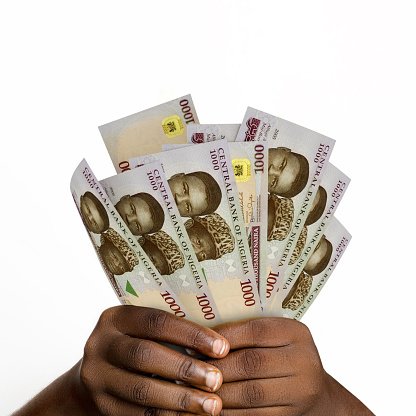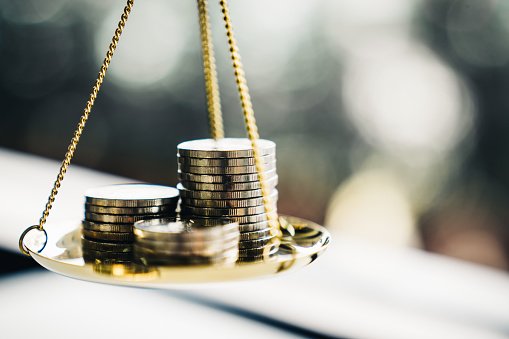Hey guys,
Welcome to my blog.
It is a pleasure for me to return to this wonderful community, which has active and dedicated moderators.
We'll be studying the supply and demand of money today.
Following a discussion of the numerous reasons people own financial wealth, we'll look at what determines the value of money.
Please go with us as we start.
Anything that is commonly used as a medium of exchange in a specific location is referred to as money.
It can also be considered a medium through which values and prices are expressed as money that travels from one person to another, one state to another, and one country to another, facilitating international trade.
The total quantity of money that different people in the economy wish to hold for a variety of reasons is referred to as the demand for money.
It is also possible to define it as the desire to own money, which is the act of keeping one's valuables in liquid form rather than squandering them.
Demand for money is sometimes referred to as "liquidity preference" in the study of economics.
- Why people hold money
Of fact, there are a variety of reasons why different people hold varying amounts of money.
Lord Keynes proposed three explanations for why people possess money. They are:
✔️Speculative motive
This motivation primarily relates to business. A person who holds money for speculative motives typically uses it for commercial needs.
And it is claimed that this demand is elastic.
✔️Precautionary method
This is a request for money to pay for unforeseen costs and for unforeseen events.
For instance, unwelcome guests, illness, accidents, etc.
People frequently save money because of life's uncertainties, as the proverb goes: "Save money today and money will save you tomorrow."
✔️Transaction motive
Another factor contributing to the prevalence of money possession is daily transactions.
For instance, the family's primary earner needs to have money on hand to pay bills and provide for the family's requirements.
The reasons why people keep money are mentioned above; if you'd want to learn more, keep reading as we talk about the availability of money.
The quantity of money that is available for use in the economy at any given time can be defined as the supply of money.
This has to do with money leaving the banking system in the form of bank notes.
- Factors affecting the supply of money
There are numerous factors that tend to affect the supply of money and they include;
✔️Bank rate
The bank rate is the fee that central banks charge commercial banks for lending to and borrowing from them.
The discount of banks' bills will be impacted if the bank rate is raised, which will deter banks from borrowing money and decrease the money supply.
✔️Bank reserve
Cash reserve, often known as cash ratio, refers to the amount that commercial banks are supposed to hold behind.
Additionally, the supply of money tends to be high when the cash reserve is low and low when the cash reserve is high.
✔️Economic situation
The availability of money in an economy is also impacted by the state of the economy; for instance, during an inflationary period, the availability of money is typically reduced.
The amount of goods that can be purchased with money, or the quantity of commodities that can be traded for it, can be used to describe the value of money.
In other words, the purchasing power of money can be used to describe the value of money.
When fewer items can be purchased with a certain sum of money, it can be argued that the value of money has decreased, and this can only happen when the price of the commodities increases.
And it may be claimed that the worth of money has increased when a given quantity of money can be used to purchase a greater variety of commodities.
Different factors determines the value of money and some of them will be explained below.
✔️Price level
One of the key variables influencing the price of money is the cost of products and services.
When the cost of products rises, money's worth declines because it can buy fewer goods; yet, when the cost of goods falls, money's value rises concurrently.
✔️height of circulation
When the amount of money in circulation increases without a corresponding increase in the amount of goods in circulation, it will be evident that there will be a shortage of goods and that a given amount of money will only be able to purchase a smaller number of goods, indicating that the value of money has decreased.
But when something else occurs, the value of money will rise.
This clarifies how the idea of our power ups contributes to the rise in the price of steem, but we won't be learning that today.
✔️Inflation and Deflation
The value of money is impacted by inflation and deflation, as is common knowledge.
With too much money in circulation, inflation can be defined as an economic condition in which the value of money decreases during the inflationary era and increases during the deflationary phase.
✔️ Measurement of monetary value
Typically, a price index is used to gauge a currency's value.
An explanation of a price index is that it is a weighted average of prices that are expressed as a percentage of prices that were in effect in the base year.
- Mathematically put
Price index = (Current year price/Previous year price)X100
- Example
Steem price in 2021 = $0.8
Steem price in 2022 = $0.2
Price index = (0.8 ÷ 0.2) × 100
Price index = 4 × 100
Price index = 400%
Knowing that the price index is used in determining the increase in cost of living, it is seen that in relation to Steem, the cost of living have been increased by 400%.
The relationship between the level of prices and the amount of money in circulation is how the quantity theory of money is best understood.
When the supply and demand of money are out of balance, this theory helps to explain what happens.
The excess supply of money that people hold (i.e., a surplus supply of money) will be spent on already produced goods, which will raise the price level, according to the quantity theory of money.
According to the quantity theory of money, more services can be provided if there is more money in circulation.
Professor Irving Fisher changed the quantity theory of money into what is currently known as the velocity of circulation of money.
Furthermore, according to Professor Fisher, the velocity of money circulation describes the speed at which money is transferred from one person to another within an economy.
The quantity equation of exchange, which is mathematically used to represent the quantity of money, is presented here.
[MV= PT]
M = Money supply
V = Velocity or Height of circulation
P = Price level
T = Quantity of Goods.
Money is more than just what we have or spend to address difficulties, as we've seen above.
Why people keep money has been taken into account, and the value of money and its mathematical representation has been thoroughly described.





Note: You must enter the tag #fintech among the first 4 tags for your post to be reviewed.
Downvoting a post can decrease pending rewards and make it less visible. Common reasons:
Submit